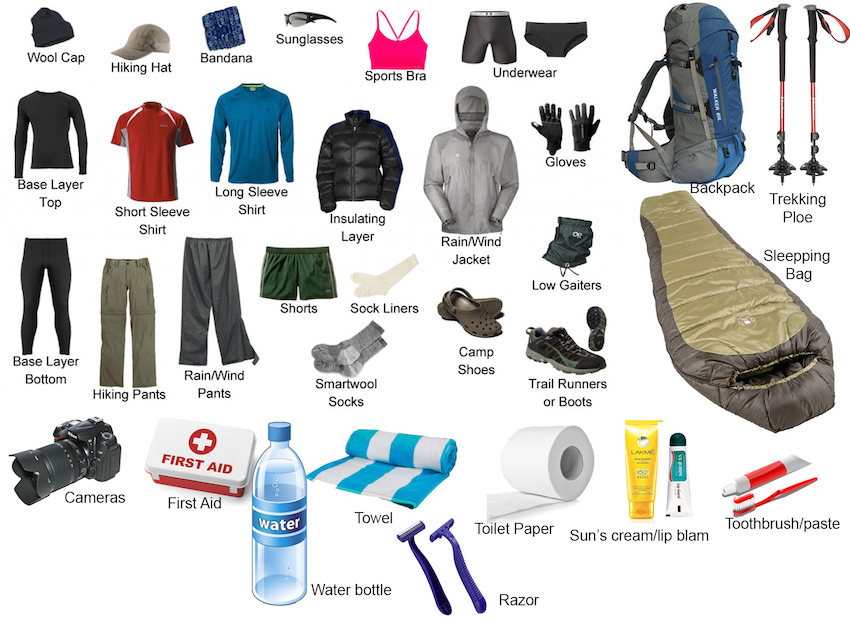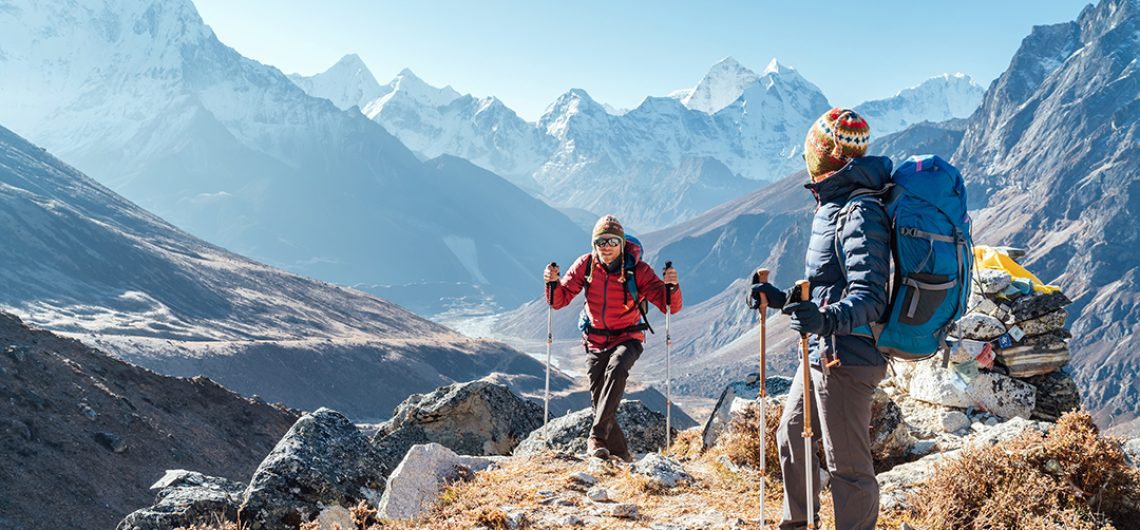When it comes to getting ready for Everest Base Camp trekking, one of the most critical aspects is going through the Everest Base Camp Trek Packing List. A comprehensive planning process is required for your Everest Base Camp trek packing list. It is essential to give careful consideration to the items that should be included in your packing list as well as those that should be deleted from it. Including a large number of items that are not necessary on your packing list will have an effect on the total size of your luggage, and you are aware of how uncomfortable it is to travel with a big bag that is full of items that you might have refrained from bringing with you.
In a similar vein, if you carelessly lighten your Everest Base Camp trek packing list, you will run into difficulties during your voyage. This is because you will not have the appropriate equipment, clothes, and other stuff when you require them, whether it be during your travels or when you are staying in the foreign nation. The most important thing is to search for equilibrium. You should make sure that your bag contains everything that you require, but at the same time, you should avoid carrying things that you will never end up using. Putting together a packing list for your Everest Base Camp climb might make your adventure seem much less complicated.
Although you will be trekking to Everest Base Camp, you are required to bring along the necessary clothing. Take into account the amount of days that you will be away on your trip, and be sure to include one pair of shoes for each day, as well as a couple of extra pairs. Toiletries and other items linked to cleanliness should always be carried with you at all times. If you are taking medicine, make sure you take enough of it to last the entire tour, and if at all possible, take even more. During the journey, you may choose to rent trekking equipment from your trekking agency so that you do not have to carry some of the goods that you would normally bring. Be certain of it before you embark on the journey.

Packing for the Everest Base Camp trek requires careful consideration of essential gear and supplies to ensure a safe and comfortable journey amidst the rugged terrain and unpredictable mountain weather. Here’s a comprehensive packing list to help you prepare:
Clothing:
Pack appropriate clothing to layer for varying weather conditions encountered during the Everest Base Camp trek. Include moisture-wicking base layers, insulating mid-layers, waterproof outer shell, thermal underwear, warm hat, gloves, and sturdy hiking boots.
- Moisture-wicking base layers (tops and bottoms)
- Insulating mid-layers (fleece jacket, down jacket)
- Waterproof and windproof outer shell jacket
- Waterproof and breathable hiking pants
- Thermal underwear for colder nights
- Warm hat or beanie
- Buff or neck gaiter
- Lightweight gloves or mittens
- Hiking socks (wool or synthetic blend)
- Hiking boots (well broken-in and waterproof)
- Camp shoes or sandals for relaxing in the evenings
- Sunglasses with UV protection
- Sun hat or baseball cap
Gear and Equipment:
Gather essential gear and equipment to support your trekking needs, including a backpack, sleeping bag, sleeping pad, trekking poles, headlamp, water bottle, water purification, tent (if camping), toiletries, towel, and navigation tools.
- Backpack (40-60 liters capacity)
- Sleeping bag (rated for sub-zero temperatures)
- Sleeping pad or inflatable mattress
- Trekking poles for stability and support
- Headlamp or flashlight with extra batteries
- Personal water bottle or hydration system
- Water purification tablets or filtration system
- Durable and lightweight tent (if not staying in teahouses)
- Personal toiletries and hygiene products
- Quick-dry towel
- Lightweight and absorbent camp towel
- Trekking umbrella or rain poncho
- Portable solar charger or power bank
- Camera or smartphone for capturing memories
- Notebook and pen for journaling
First Aid and Health:
Prioritize your health and safety by assembling a first aid kit with basic medical supplies, personal medication, altitude sickness medication, sunscreen, lip balm, insect repellent, hand sanitiser, and any necessary prescription eyewear.
- Personal medication and prescriptions
- High-altitude sickness medication (Diamox)
- Basic first aid kit with bandages, antiseptic, and pain relievers
- Sunscreen with high SPF
- Lip balm with SPF
- Insect repellent
- Hand sanitizer or antibacterial wipes
- Prescription glasses or contact lenses (if needed)
Miscellaneous:
Consider additional items to enhance comfort and convenience, such as passports and permits, cash, travel insurance, navigation aids, snacks, travel towel, multi-tool or knife, emergency whistle, and gear repair kit. Adjust based on personal preferences and requirements.
- Passport and necessary permits (TIMS card, Sagarmatha National Park permit)
- Cash in local currency for purchases along the trek
- Travel insurance with coverage for high-altitude trekking
- Maps, guidebooks, or GPS devices for navigation
- Snacks and energy bars for on-the-go fuel
- Travel towel and washcloth
- Lightweight and compact multi-tool or knife
- Whistle for emergency signalling
- Portable altitude sickness monitor (optional)
- Duct tape or repair kit for gear maintenance
When you are on the Everest Base Camp Trek, one of the most challenging things you will face is being responsible for packing for the trek itself. We have developed a comprehensive and user-friendly list of everything you will require for the average Everest Base Camp Trek and other treks in the vicinity that are comparable to it. This will help you get a head start on your preparations.
In the sense that you are required to bring everything that is specified, the guide is by no means definitive. It is possible to and ought to be adapted to fulfil your own requirements and preferences.
In the course of this essay, we have included links to our own recommendations for several pieces of equipment that we have either owned or utilized. These recommendations are taken into consideration based on previous experiences of trekking in the region, as well as input from guides and visitors who have successfully completed the journey. Because we feel that this equipment provides the highest performance as well as exceptional value for money, we can guarantee that you will not have to spend an exorbitant amount of money in order to take in the splendor of Nepal.
The majority of the equipment that is described can be rented or purchased in Kathmandu or in Namche Bazaar; however, you should be aware that you run the risk of being sold cheaper, local equipment that might not be up to the standards of equipment that you purchased before you travelled.
Considering that you will be experiencing extremely chilly temperatures during the walk, it is essential to select clothing and footwear that are of a high quality and can be relied upon.
By packing wisely and prioritizing essential items, you’ll be well-prepared to embark on the adventure of a lifetime to Everest Base Camp. Adjust the list according to your personal preferences and needs, and remember to pack light to minimize the strain of carrying heavy loads at high altitudes.
Related: Packing list for Mount Kenya treks
![]()


Comments